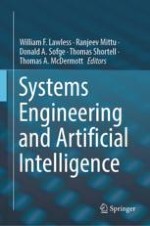2021 | OriginalPaper | Chapter
2. Recognizing Artificial Intelligence: The Key to Unlocking Human AI Teams
Authors : Patrick Cummings, Nathan Schurr, Andrew Naber, Charlie, Daniel Serfaty
Published in: Systems Engineering and Artificial Intelligence
Publisher: Springer International Publishing
Activate our intelligent search to find suitable subject content or patents.
Select sections of text to find matching patents with Artificial Intelligence. powered by
Select sections of text to find additional relevant content using AI-assisted search. powered by
